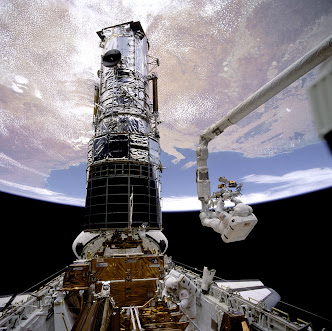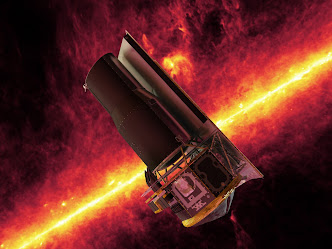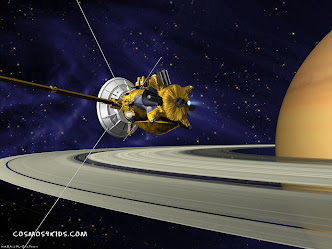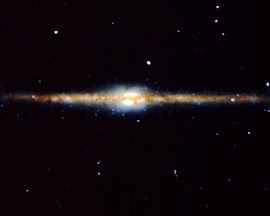********
 The Sun
The Sun
- 150 Million Km from Earth
- 109 Times Bigger than Earth
- Avg Temperature: 5500 Deg Cel
- Composition: Hdrogen and Helium
- Energy comes from Nuclear Fusion
- Has strong magnetic field and violent eruptions (Plasma)
- We see this as visible light and heat.
- Lucky for us, the Earth has a atmosphere which cuts of 60% of this Radiation.
- Sun has 99.8% of the total Mass of our Solar System.
Age of Sun: 4.6 Billion yrs
Life Span: 9 Billion yrs

The sun and its atmosphere consist of several zones or layers.
How do we know ?
Mainly based on observations from Images and mathematical calculation.
The Core makes up 2% of the total Volume but contains half of the total Mass.

Plasma of the Sun. Can reach up to 100,oo0 miles
***********
Jupiter
A Jupiter Storm - In the Outer Planet
The Great Red Spot is a huge mass of swirling gas, 3 times the size of Earth. Imagine a storm lasting for millions of years.
Jupiter is the largest Planet in our Solar System - 1000 times the size of Earth
- 800 mil Km from the Sun
- A giant ball of gas & liquid, so if there is life it has to be air borne
- Surface composed of dense red, brown, yellow and white clouds
- Takes 12 years to go round the Sun
- However, a Day is only abt 10 hours
- Has strong magnetic fields and gravitaional pull
- Has 3 Rings around the Equator (20km thick)

Three Moons Cast Shadows on Jupiter (3 eclipses)
Jupiter has 16 satellites (moons). The 4 largest are called
Io, Europa, Ganymede & Callisto.
Probes to Jupiter
- Pioneer 10
- Pioneer Saturn
- Voyager 1
- Voyager 2
- Ulysses
- Galileo

Comet Shoemaker Levy 9 bombards Jupiter
In 1994, 21 pieces of the Comet Shoemaker Levy 9
crashed into Jupiter. If this cosmic collision were to
happen to Earth, it will cause another mass Extinction.
Remember the Extinction of Dinosaurs 65 Mil years ago ???
***********
View of Saturn's Rings (total 7 flat rings of Ice Particles)
Saturn's ring is around the Equator. - About 900 mil miles from the Sun
- Takes 29 and half yrs to round the Sun
- A day in Sturn is only 10hrs 39mins
- A Giant Ball of Gas with no solid surface
- Mainly Hydrogenand Helium at surface
- Has 25 Satellites, most famous is Titan
- Cassini Probe orbited Saturn in 2004
- Huygen Probe was dropped into Titan

One of Saturn's many moons casting shadow on the Planet (Eclipse)

View of Saturn - Over range of Light Spectrum
**********
Uranus has rings and moons.
- the 7th Planet from the Sun
- 1.8 Billion Miles from the Sun
- A giant ball of gas and liquied, with Methane Ice, Liquid Ammonia, and Water on surface. The Core might be Rocky.
- Takes 84 years to go round the Sun
- Uranus is so tilted, som might have been knocked into the obliquity by a cosmic collission with another Planet.
- Has 21 Satellites (Most Famous is Miranda)
******************
- Neptune is 30 times as far from the Sun as is Earth
- Neptune has 17 Satellites (Triton is the largest
Goes round the Sun once in 165 years - A day is about 16 hours
Does not have a solid surface and blue color is frozen Methane
Neptune was first discovered by means of mathematic calculations - Has a rings like Saturn
******************
Mars - One of the Inner Planets
A team of NASA and university scientists has achieved the first definitive detection of methane in the atmosphere of Mars. This discovery indicates the planet is either biologically or geologically active.
The planet Mars, like Earth, has clouds in its atmosphere and a deposit of ice at its north pole. But unlike Earth, Mars has no liquid water on its surface. The rustlike color of Mars comes from the large amount of iron in the planet's soil.
- 4th Planet from the Sun
- Strong evidence that water once flowed on the surface evidence includes channels, valleys, and gullies on the planet's surface
- 140 Mil Miles from the Sun
- Takes 687days to go round the Sun
- Length of Day is almost same as Earth
- Gravity is about 38% of that on Earth
- Has the Largest Volcano in the Solar System and many impact craters
- Atmosphere consist mainly of CO2 with small amounts of 02, Nitrogen, CO, and water vapour.
- Has 2 tiny Moons, Phobos and Deimos
- Does have possibilities for Life (though not conclusive)
Probes to Mars
- Mariner 9, orbited Mars in 1971
- Viking Probe landed on 1976
- Mars Pathfinder landed a Rover Sojouner
- Mars Global Surveyor, an Orbiter
- Mars Odyssey Probe Mars in 2001
- Mars Express Mission in 2003 landed Beagle 2
************
Venus
- Earth's Twin, almost same size as Earth
- At closest, it is 23 mil miles from Earth
- Takes only 225 days to go round the Sun
- Rotates in Retrograde direction
- Venus has a variety of surface features, including level ground, mountains, canyons, and valleys. About 65 percent of the surface is covered by flat, smooth plains. Has many Impact Craters
- Thick clouds of sulfuric acid cover Venus
****************
Mercury The Closest to the Sun
 Mercury is the planet nearest the sun
Mercury is the planet nearest the sun
It moves round the sun faster than any other planet
Goes round the Sun once in 88 days
Rotation of the planet is slow, a day in Mercury is equivalent to 176 earth days.
The Surface is much like our Moon and the interior is like our Earth
- Probes to Venus
Mariner 10 in 1974
Messenger Probe in 2004 and orbit it in 2011
*************
Clip1: Hubble Telescope: Beyond Earth
Clip 2: Other Space Telescopes
Clip 3 The Universe and Other Specialised Telescope





+From+Earth.jpg)













































